Mount Etna Eruption 2025
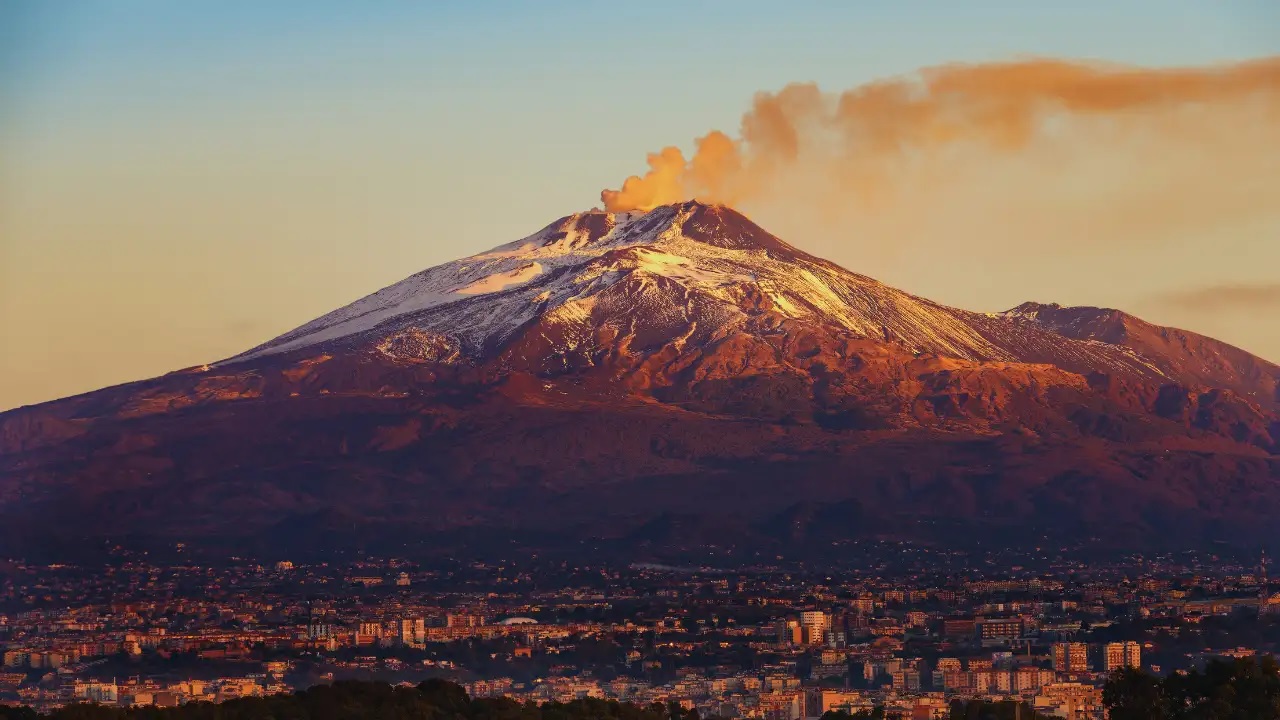
- 18 Feb 2025
In News:
On February 12, 2025, Mount Etna, Europe's tallest and most active volcano, erupted once again, spewing lava flows and dense ash clouds into the atmosphere. The event drew attention not just due to its visual spectacle, but also because of the geological, environmental, and socio-economic implications it carries.
About Mount Etna
- Location: Eastern coast of Sicily, Italy — the largest island in the Mediterranean Sea.
- Type:Active stratovolcano, known for frequent eruptions.
- Height & Size: Highest peak south of the Alps and tallest active volcano in Europe; rises over 3,300 meters and covers 1,190 sq. km with a basal circumference of 140 km.
- Tectonic Setting: Lies above the convergent boundary of the African and Eurasian tectonic plates, making it a hotspot for seismic and volcanic activity.
- Eruption History: Recorded to have erupted over 200 times since 1500 BCE, with persistent volcanic activity.
- UNESCO Recognition: Declared a UNESCO World Heritage Site in 2013 for its exceptional geological features, cultural relevance, and continuous scientific monitoring.
- Decade Volcano Status: Designated a Decade Volcano by the United Nations due to its proximity to densely populated areas, including the city of Catania, and the potential risk it poses, warranting special scientific attention.
Dokra Artwork
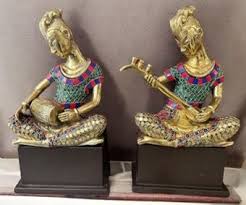
- 18 Feb 2025
In News:
During a recent diplomatic visit, Prime Minister Narendra Modi gifted French President Emmanuel Macron and the First Lady symbolic Indian artifacts — a Dokra artwork and a silver hand-engraved mirror — showcasing India’s rich heritage of tribal and fine metal craftsmanship.
Key Highlights:
Dokra Art: A Living Tradition
- Dokra, also known as Dhokra, is a non-ferrous metal casting craft that employs the lost-wax technique, practiced for over 4,000 years.
- It is predominantly practiced by Ojha metalsmiths and DhokraDamar tribes, across Chhattisgarh, Jharkhand, Odisha, West Bengal, and Telangana.
- Notable for its seamless brass sculptures, each Dokra artifact is cast using a single-use clay and wax mould, ensuring that no two pieces are identical.
- Dokra items include figurines, utensils, jewelry, and religious motifs, often reflecting tribal life and nature.
Historical Significance:
- The “Dancing Girl” of Mohenjo-Daro (from the Harappan Civilization) is considered one of the earliest examples of Dokra-style metal casting, underlining its archaeological and civilizational importance.
Craftsmanship Features:
- The casting process takes nearly a month per piece, reflecting the labour-intensive and skilled nature of the art.
- Dokra is globally recognized for its sustainability, aesthetic uniqueness, and its ability to merge function with folklore.
Prime Minister Dhan-Dhaanya Krishi Yojana (PMDKY)
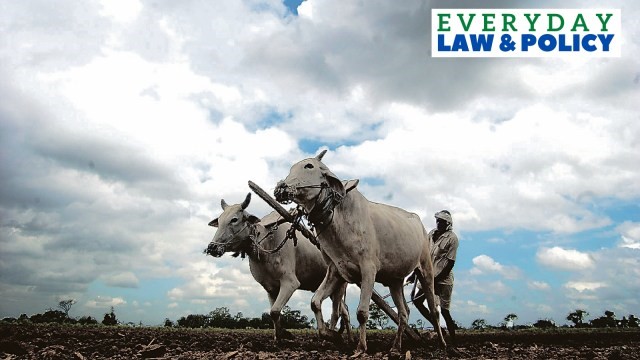
- 18 Feb 2025
In News:
Announced in Union Budget 2025, the Prime Minister Dhan-Dhaanya Krishi Yojana (PMDKY) aims to boost agricultural productivity, sustainability, and rural income in India’s lagging agricultural regions.
Inspired by the Aspirational Districts Programme (ADP), PMDKY targets 100 districts marked by low productivity, moderate cropping intensity, and limited credit access, benefiting approximately 1.7 crore farmers.
Key Highlights:
Objectives:
- Enhancing Agricultural Productivity:Promote scientific techniques and modern farming to improve crop yield and land use efficiency.
- Crop Diversification & Sustainable Practices:Encourage climate-resilient and eco-friendly farming methods, reducing dependence on water-intensive crops.
- Post-Harvest Infrastructure Development:Establish storage and agro-processing units at panchayat and block levels to reduce post-harvest losses (currently ~35-40%).
- Improving Irrigation Efficiency:Support micro-irrigation techniques like drip and sprinkler systems to raise water-use efficiency from the current 38%.
- Expanding Agricultural Credit:Facilitate short- and long-term institutional credit, especially through the Kisan Credit Card (KCC) and agri-fintech models.
Implementation Framework:
- Targeted District Identification:Based on cropping intensity, productivity, and credit penetration, using data from the Ministry of Agriculture, NABARD, and Department of Financial Services.
- Integrated Funding Approach:Leverages existing schemes like RKVY, PMKSY, NFSM, and SMAM through convergence for efficient fund utilization.
- Institutional Mechanism:Multi-tier coordination involving the Centre, States, and District-level authorities for implementation and real-time performance tracking.
- Technology Integration:GIS mapping, AI advisories, blockchain for supply chain transparency, and sensor-based monitoring for precision agriculture.
- Farmer Empowerment:Strengthening Krishi Vigyan Kendras (KVKs) and Farmer Producer Organizations (FPOs) to support knowledge dissemination, skill development, and market access.
Strategic Significance of PMDKY:
- Bridging Regional Disparities:Targets structurally weak districts to ensure balanced regional growth in agriculture.
- Food and Water Security:Supports climate-resilient farming amid rising rainfall variability (+15–20% by 2050) and increasing water scarcity (55% of agriculture is rainfed).
- Boosting Rural Incomes:Aimed at transforming smallholder agriculture, as ~80% of Indian farmers are marginal with an average income of ?1.2 lakh annually.
- Reducing Post-Harvest Losses:Addresses infrastructural bottlenecks causing 35–40% losses, especially in perishables like fruits and vegetables.
India–US TRUST Initiative
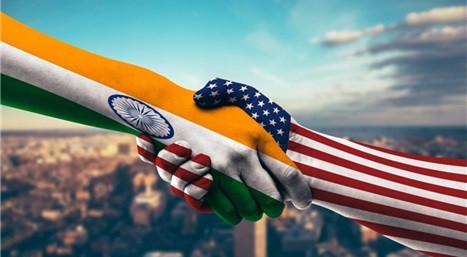
- 18 Feb 2025
In News:
India and the United States launched the Transforming Relationship Utilizing Strategic Technology (TRUST) initiative during the Indian Prime Minister’s 2025 visit to the US. This landmark partnership aims to strengthen bilateral cooperation across critical and emerging technology sectors, diversify global supply chains, and reduce dependence on China in strategic industries.
Key Objectives and Scope of the TRUST Initiative
The TRUST initiative is a comprehensive framework focused on:
- Critical Minerals and Advanced Materials
- Establishing resilient supply chains for critical minerals such as lithium, cobalt, and rare earth elements (REEs)—vital for sectors like defense, semiconductors, clean energy, and electric vehicles (EVs).
- Launch of the Strategic Mineral Recovery Programme to recover and process critical minerals from industrial waste.
- Joint R&D and investment under the Minerals Security Partnership (MSP) and Minerals Security Finance Network (MSFN).
- India to scale up exploration, processing, and recycling of critical minerals under the National Critical Minerals Mission (2025–31) with a ?16,300 crore outlay.
- Pharmaceutical Sector Collaboration
- Reducing India’s reliance on China for Active Pharmaceutical Ingredients (APIs) through alternative supply chains and expanded API manufacturing.
- Encouraging investment in Indian pharma production, including facilities in the US.
- Pharma formed 21.9% of India’s $20 billion consumer goods exports to the US in 2023.
- High-Tech and Emerging Technologies
- Joint R&D in semiconductors, AI, quantum computing, space, defense, biotechnology, and energy.
- U.S.-India AI Roadmap to be finalized by 2025, including data center infrastructure, processor access, and AI applications.
- Facilitating innovation through academic, industrial, and government collaboration.
- Technology Transfer and Trade Facilitation
- Easing export controls and restrictions to foster high-tech trade.
- Enabling smoother cross-border technology flows and investment under mechanisms like the CHIPS Act (ITSI Fund).
Associated Initiatives Enhancing TRUST
- iCET (Initiative on Critical and Emerging Technologies) – Launched in 2022, focuses on bilateral cooperation in semiconductors, AI, quantum, and wireless tech with defense applications.
- INDUS-X – Defense innovation initiative involving India’s iDEX and the US Defense Innovation Unit (DIU), emphasizing secure chip designs and green energy.
- CHIPS Act Collaboration – ITSI Fund supports India's semiconductor capacity through funding for R&D and infrastructure.
Strategic Significance
- Reducing China Dependence:China dominates ~70% of global REE production. TRUST helps India and the US build alternative, secure supply chains.
- Boosting Atmanirbhar Bharat:TRUST supports India’s goals under the National Critical Minerals Mission to become self-reliant in key strategic sectors.
- Enhancing Tech and Defense Capability:Ensures timely access to rare materials essential for missiles, radars, fighter jets, AI hardware, and quantum computing.
- Strengthening Pharma and Health Security:Addresses global API shortages and reduces vulnerability in critical drug manufacturing.
- Promoting Clean Energy Transition:Secures supply of minerals like lithium and cobalt essential for battery production and renewable energy tech.
- Fostering Innovation and Investment:Encourages private sector collaboration and US investments in India’s tech, mineral, and pharma sectors.
Current Status of India’s Critical Minerals Ecosystem
- Imports: India is a net importer of most critical minerals; import bill (FY24) stood at approx. ?30,000 crore.
- Exports: India remains a net exporter in rare earths.
- Budgetary Allocation (2025–31):
- ?7,000 crore for exploration.
- ?1,500 crore for recycling incentives.
MITRA Platform
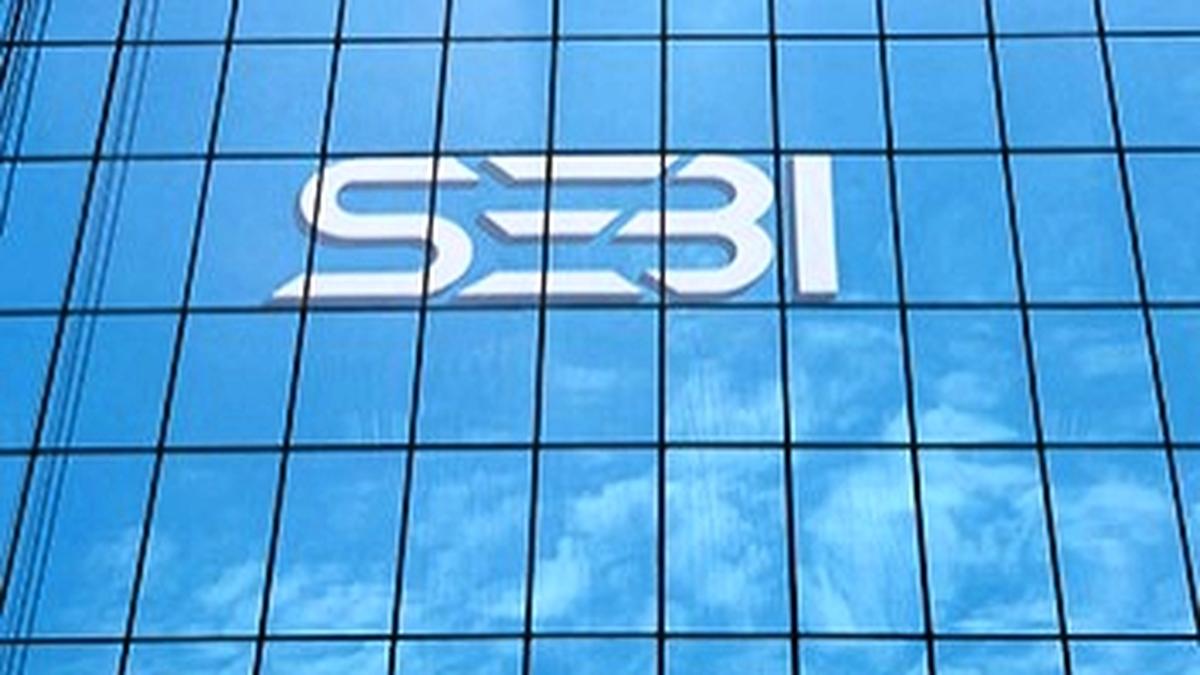
- 18 Feb 2025
ecosystem, the Securities and Exchange Board of India (SEBI) has launched a new digital platform—MITRA (Mutual Fund Investment Tracing and Retrieval Assistant).
Key Features:
- Objective:MITRA aims to help investors trace, identify, and reclaim inactive or unclaimed mutual fund folios, while ensuring KYC (Know Your Customer) compliance under prevailing regulatory norms.
- Developed by:The platform has been developed at an industry level by the two Qualified Registrar and Transfer Agents (QRTAs) —
- Computer Age Management Services Ltd. (CAMS)
- KFIN Technologies Ltd.
These firms serve as agents of Asset Management Companies (AMCs).
- Hosted by:The platform is hosted jointly by CAMS and KFIN Technologies to serve as a centralized, searchable database for inactive and unclaimed mutual fund folios across the industry.
- Functions:
- Enables investors to search for overlooked investments or investments made in their name by others.
- Facilitates rightful legal claims by heirs or nominees.
- Encourages KYC compliance, thus reducing the number of non-KYC compliant folios.
- Aims to minimize the risks of fraudulent redemptions linked to dormant folios.
- Supports the creation of a transparent financial ecosystem by reducing unclaimed investments.
Definition of Inactive Folio:
- A mutual fund folio is considered inactive when no investor-initiated financial or non-financial transactions have occurred for ten consecutive years, even though the folio holds units.
Institutional Measures:
- Unit Holder Protection Committee (UHPC):SEBI has broadened the role of the UHPC under mutual fund regulations. The committee is now tasked with monitoring inactive folios, unclaimed dividends, and pending redemptions, ensuring proactive steps are taken for investor protection.
- Stakeholder Involvement:SEBI has directed AMCs, RTAs, Registered Investment Advisers (RIAs), the Association of Mutual Funds in India (AMFI), and mutual fund distributors to actively promote awareness regarding MITRA among investors.
